How “Those About to Die” VFX Supervisor Peter Travers Built Rome in 100 Days
Roland Emmerich knows how to destroy worlds. The multi-hyphenate is behind some of the biggest disaster movies in film history, including Independence Day, The Day After Tomorrow, 2012, and Moonfall. But instead of depicting a cataclysm for his latest effort, he’s building an empire for the Peacock series Those About to Die (streaming on July 18), which takes place during Rome’s Flavian dynasty just as the Coliseum is receiving its finishing touches.
The 10-episode action drama has one of the greatest actors of a generation, Anthony Hopkins, as Emperor Vespasian, who ruled from 69-79 AD and decided to gift the now historic arena to the Roman people rather than the city’s political factions. Based on a book written by Daniel P Mannix, Emmerich unpacks a deliberately paced story following the charioteers who race inside the Circus Maximus and its seedy underbelly, perfectly cast with Iwan Rheon (Game of Thrones) as Tenax, the man at the center of the action. When the series does step into the gladiator area, we are emotionally attached to a dynamic ensemble cast manipulating the power strings of rule.
To bring the painterly imagery to screen, the director tapped longtime collaborator Peter Travers, who served as visual effects supervisor alongside visual effects producer Tricia Mulgrew, a team that relied on virtual production techniques to pull off the immersive period piece. “I think we started in April and finished in October, and out of that, there were 100 shooting days on a virtual production stage,” says the BAFTA-nominated Travers. “This wouldn’t have worked if we didn’t have somebody like Roland, who has been pushing the latest technology during his whole career. He pushed the virtual production wall to its breaking point every day, which broke on some days. He would just then pull back a little bit to where it worked, and then he’d get the shot.”
Pushing the boundaries was just part of the visual effects work of Those About to Die. Below, Travers details how they conjured the ancient city, crashed racing chariots, and tamed ferocious lions.
You worked with Emmerich on Moonfall. Did you begin this project right after?
We knew this was on Roland’s list of future potential projects when we were doing Moonfall, but when I was on that project, I couldn’t think of a lick about it because I was knee-deep in the moon. But when Those About to Die surfaced, it was like, okay, Ancient Rome, here we go.
The series is based on a Daniel P Mannix novel. Did that become reference material for the visual language?
Yeah, it’s all heavily influenced. Rome is so well documented and some of the buildings are still here today. If we can try to capture the magic of it as much as we can, then that’s good.
How did Roland describe the overall aesthetic?
We were trying to capture an active city, not a museum. People are alive, and they’re trying to make their way in ancient Rome. The city was a melting pot of cultures, so it was a culturally rich environment. But more importantly, it was an active environment.
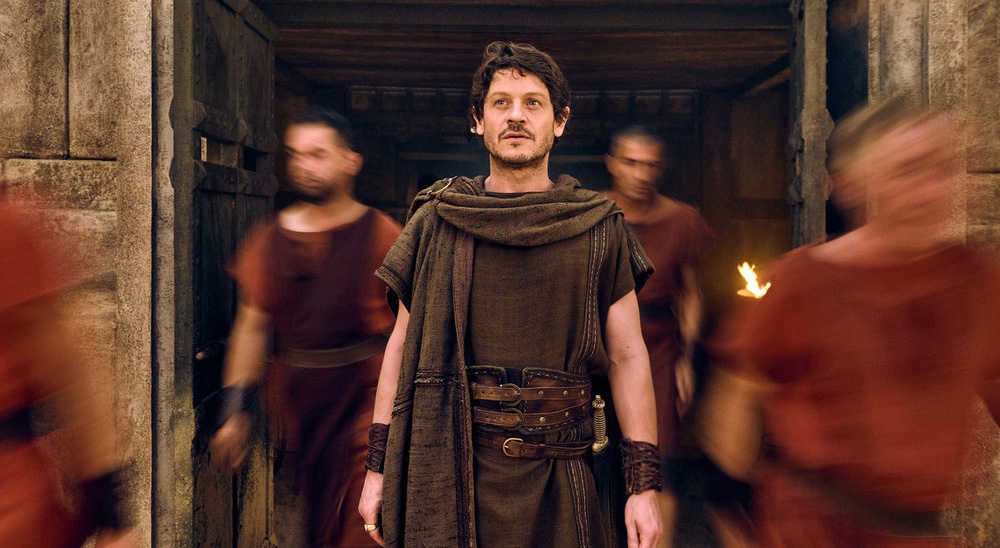
An engaging aspect of the series is this idea of sport. How did that influence you creatively?
The show’s main center is around sport. It’s evident the more we read about Rome, people haven’t changed. One of the reasons why sport is so popular today is because of the Circus Maximus games, the horse racing, and the gladiator stuff is a direct thing from an ancient past that is so relatable to the NFL, basketball, UFC fighting, and all those kinds of things. Human beings still have this kind of innate response to sport. That’s what the show is primarily about, and that’s why sports matters even today. There’s our human identity with our history; a lot of it comes through athletics, sports, and the Olympics.
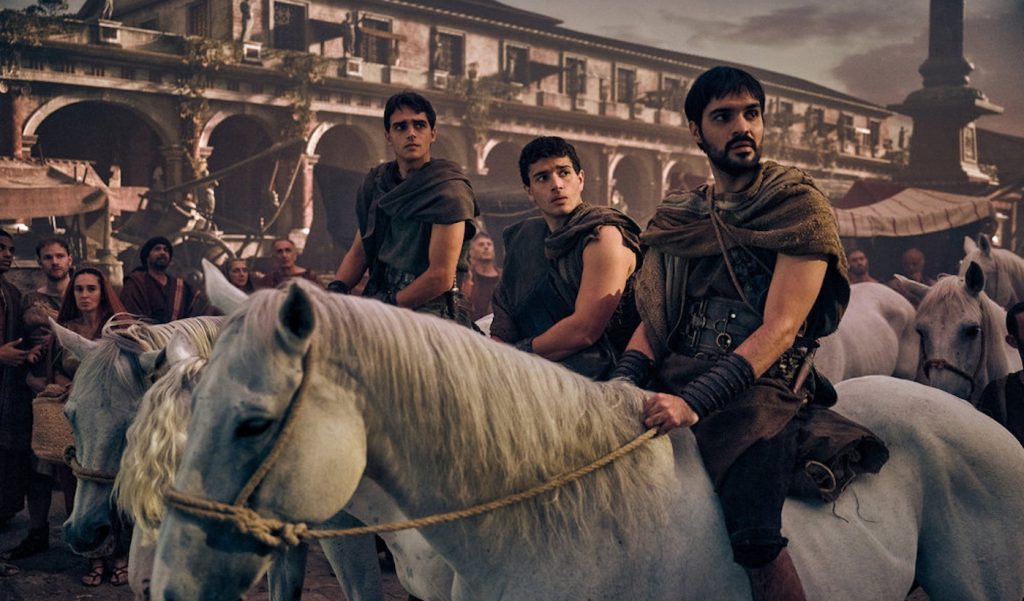
VFX producer Tricia Mulgrew worked with you on Moonfall. Did Tricia’s role change for the small screen?
Both of our jobs were that much harder on this show, in particular, because of the virtual production. It completely reorganizes the schedule, making it that much more challenging. On a typical movie, you have one deadline, which is the very end before the movie comes out. On this, we had ten deadlines with our ten episodes.
The series takes place in Rome among different regions, houses, and ports that are woven into the storytelling. What was the first step in creating the city map?
We acquired a virtual Rome model to use in Unreal Engine that we thought was the most complete, and then we started building upon it. When I first got it, I brought it to Roland, and we sat down in Unreal on my computer. We were flying around Rome, and he was like, ‘Oh my god, this totally changes everything.’ We were like, oh, look at this area, look at this area, and all that kind of stuff. It was beautiful. And it gave us a head start at being able to do virtual production.
How did virtual production affect the pipeline for other departments?
The trick to the show is that we became like this digital backbone for virtual production and visual effects. The entire show, the costumes, production design, and everything else were non-linear and broadband. It even affected scouting and where we did location scouting. With our production designer, Johannes Muecke, we were everyday working for hours going, okay, what about this model? Can you use this? And then Johannes would say, ” Okay, I talked to Roland, and we want columns that look like this. Then I would say, well, if you’re going to build those columns, then we need to scan and get them into our Unreal file. So things happened in both directions constantly.
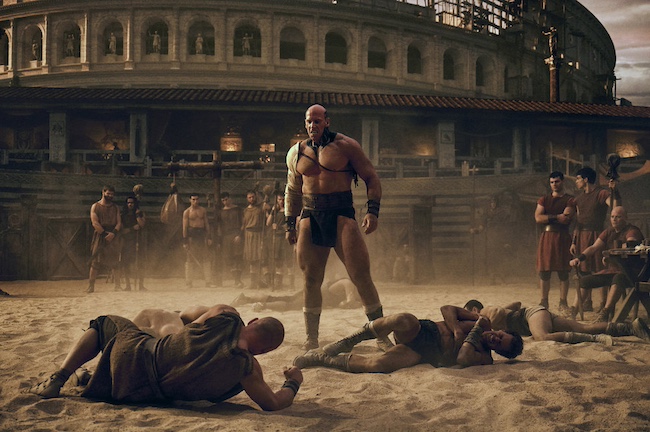
What was the virtual production environment setup?
It was broken up into five nodes. I think there were ten machines in total that were synced together with the end display in Unreal. So imagine a wall with ten big TVs, all synced together and displaying a 16K image. It is multiple computers doing the work. It all had to happen in real time because we were camera tracking. So we’re building this 3D Unreal environment on the wall. And then when the camera moves parallax, the stage is on a big rotation platform, so we can rotate it. DNEG also had to bring a lot of their artists to the location because it was easier than transporting terabytes of data from the mothership in London.
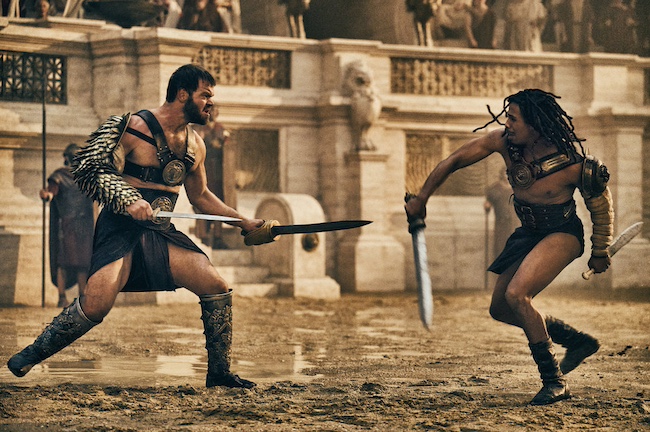
One of the visual stars is the Circus Maximus, the racetrack that holds the chariot racing. How did you recreate the historic location?
There was a Circus Maximus in Unreal with the right dimensions, but we rebuilt it because the things fit together because of what we shot. We had what we called the Emperor’s Balcony, where they viewed the horse racing. Production design designed a practical Emperor’s Balcony, and then we matched it virtually and fit it into the full Circus Maximus for all the virtual shots. Then, we had to have a smaller practical version of the Circus Maximus for when we used the practical horses in the photography. It’s as if we had to do a set extension, which happens quite a bit in the show. That way, we could put full crowds behind real horses around the bend. And those are some of my favorite shots because they look great. It’s real horses going around the real Circus Maximus.
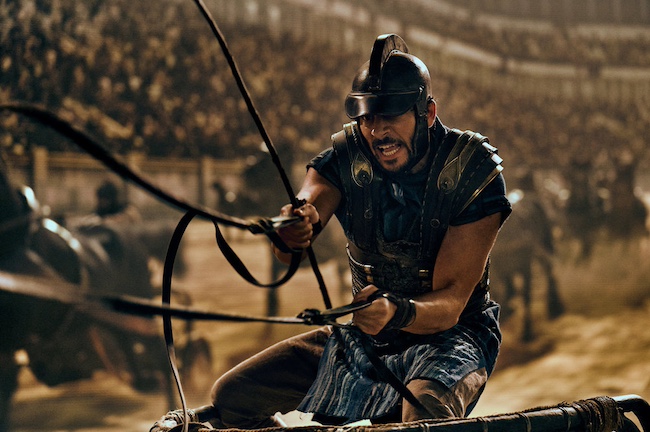
How did you approach the chariot races and consequential crashes that happen inside the Circus Maximus?
We pre-viz every shot, even the reaction shots and all the close-ups of the charioteers; all of that’s pre-viz. If you have a director that embraces previs for what it actually is, which is a preparatory tool, then you can really map it out. Then, when it came time to do the action unit stuff, I was the action unit director, so I directed all the horses going around the track. I sat down with the AD and mapped out all the sequences. I think there are eight chariot races across all ten episodes. We did block shooting, so it was like this big decoder, a spreadsheet of all the shots. And with our previs, we could bring up the shot with all the camera guys, the horse trainers, and everyone and know what we needed to do.
We also get to see the construction of the Colosseum. What steps took place to model the landmark?
We had a Colosseum model in Unreal and the general layout of the Piazza around the Colosseum. That ends up being just as important as the interior because a lot of our shots and a lot of our scenes take place outside the Colosseum when they’re building it. There was also an incredible amount of set decoration in the Colosseum. That whole environment ended up being completely designed by the production. Like the cranes and scaffolding, what stages of the marble are needed? We had to keep all of this in mind to show the different levels of construction. And it goes from, I would say, 50% completed at the beginning to 100% completed for the opening games that are in episode nine. So it was a ton of work, and we took some liberties, admittedly, because that area transformed quite a bit.
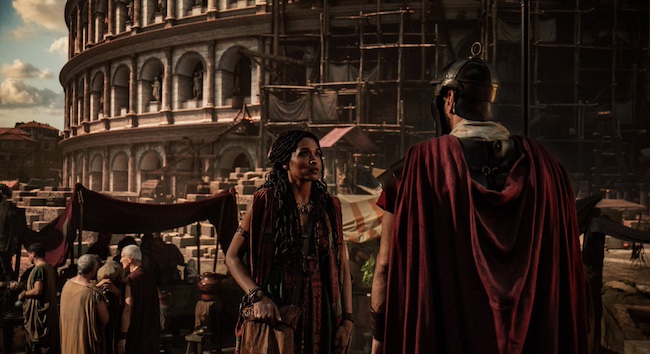
We also visit Northern Africa in the pilot, where the story of Cala [Sara Martins] and her family begins. Her son Kwame [Moe Hashim] is introduced with a lion hunt that is captured. On set, there was an actor playing the lion in a suit. How did that performance help translate the visual effects?
I would think many visual effects teams and supervisors probably have their own flair with that stuff. I wouldn’t say that mine is abnormal, but my philosophy is to get the plate, not be so intrusive with the visual effects, with tracking markers and things like that, but get the performance right. Then, hopefully, most of the photography is good to go, so you’re doing less repair work. So I prefer, especially when you’re replacing a performance of a human with a CG character of some kind, with as little footprint as possible.
For more on Universal Pictures, Peacock, and Focus Features projects, check out these stories:
“Nosferatu” Trailer Unleashes the Iconic Vampire in Robert Eggers’ Latest
“The Bikeriders” Costume Designer Erin Benach’s Vintage Vibes for Rough Riders
Featured image: THOSE ABOUT TO DIE — Episode 103 — Pictured: (l-r) Dimitri Leonidas as Scorpus, Eneko Sagardoy as Andria — (Photo by: Reiner Bajo/Peacock)



